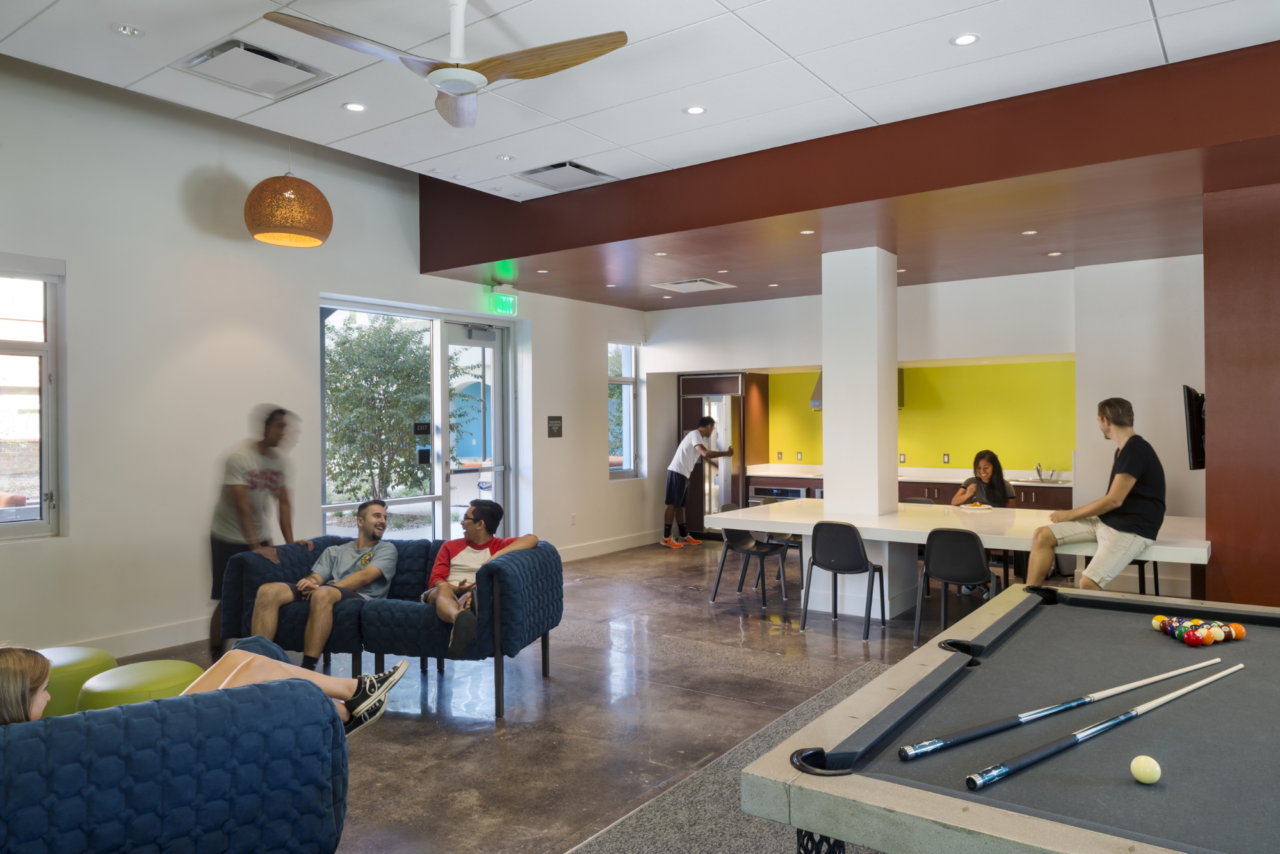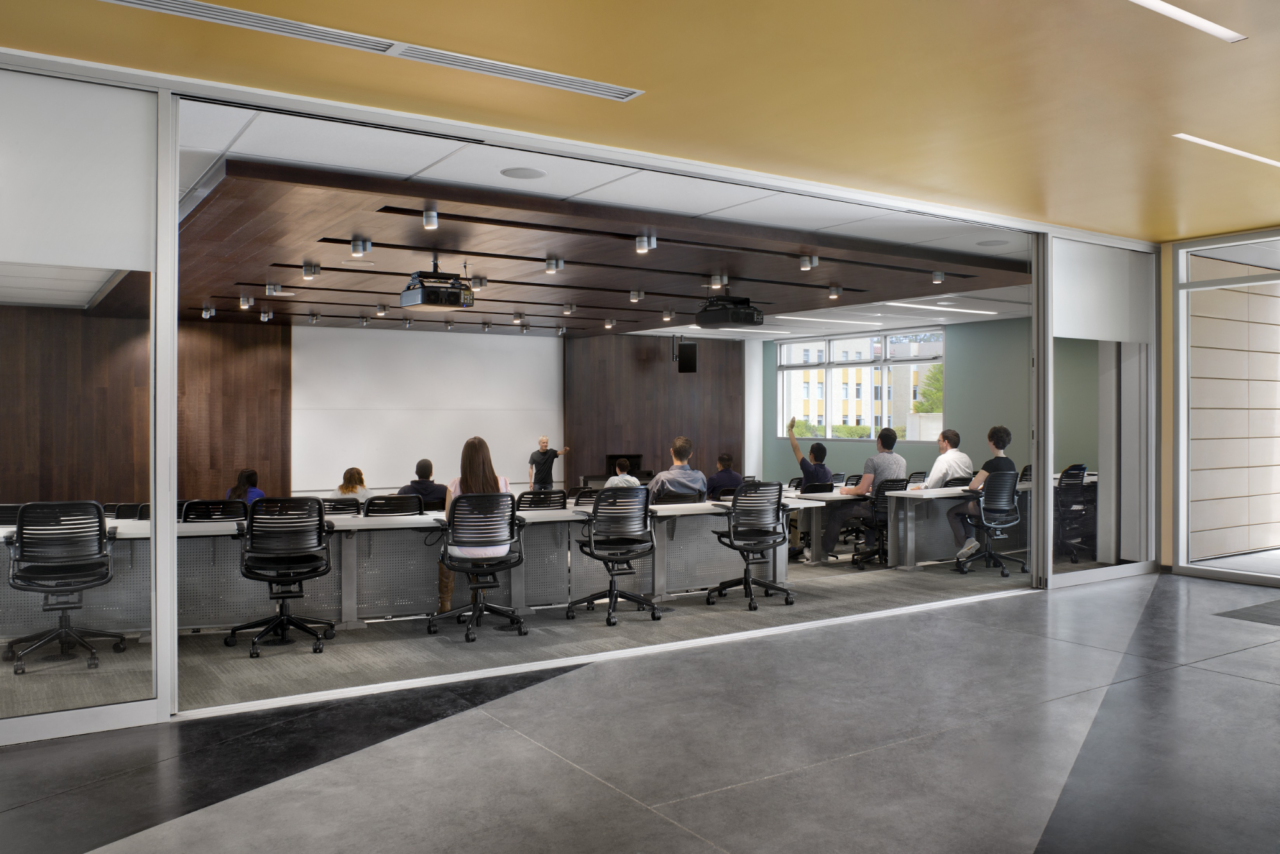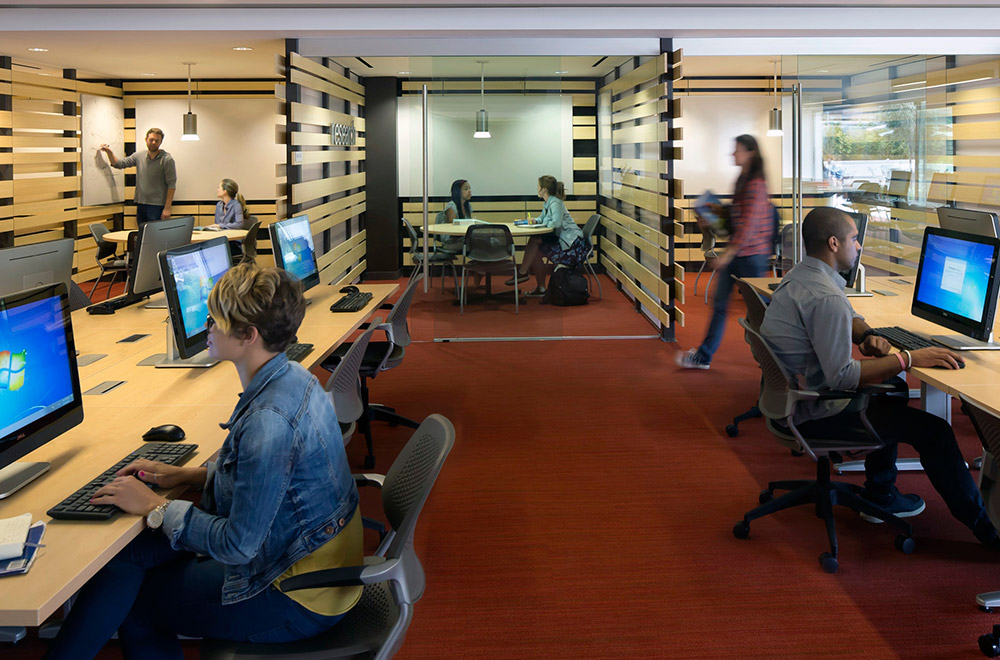Incoming First-Year college students have thousands of colleges and universities to choose from. How do they know which college is the perfect fit for them? To make this decision, many students look not just at academics, but also at the overall design of the college. The interior can tell them a great deal about the college’s values and culture.
Some of the latest college campus design trends help administrators and building planners showcase these values. By thinking carefully about the interior design of every room on campus, you’ll attract prospective students and cultivate a more positive environment for established scholars.
Key College Campus Design Trends
Popular paint colors and building materials go in and out of fashion every year, but there are a few interior design trends that have staying power. These three college campus design trends are modern, yet timeless:
- Reflecting student and community values
- Creating open social spaces
- Designing flexible classrooms
Why will these three trends stand the test of time? They go beyond aesthetics by addressing crucial student needs and fostering a more welcoming learning environment. In other words, interior design has to do more than make the space look beautiful. It must also inspire students to participate in their communities, support each other, and dive deeply into their studies.
 Reflecting Student and Community Values
Reflecting Student and Community Values
When prospective freshmen students visit college campuses for the first time, they like to see their own values mirrored in the building. This is what attracts them to the school and makes the campus memorable. For example, students who care about the environment seek out environmentally-conscious colleges. Sustainable interior spaces that look more natural or have plenty of daylight will win over these types of students.
Often, when students go to college, it’s the first time they’re living away from their parents and family members. This can cause anxiety, loneliness, and feelings of isolation. As such, it’s important that there are components of the design that make students feel more comfortable. Helping these students feel like the campus is a second home of sorts eases the transition. It makes it easier for the students to branch out and feel as though they’re apart of the community.
And while students are the primary focus of campus design, a college also needs to appeal to their parents. Parents and guardians need to feel confident and comfortable with the thought of their child thriving in a new, unfamiliar community over the next few years.
Spartan rooms painted in neutral colors may look timeless at first glance, but they often feel too sterile to students. Modern college designers are also injecting more personality into residence halls, student unions, cafeterias, libraries, hallways, and classrooms. Community-made artwork, branding, and creative color schemes make students feel more connected to the college and the student body. They want to feel like they are part of a unique, vibrant community unlike any other.
To incorporate this trend into your college campus, consider:
- Mimicking the look of the environment: When HMC renovated Zura Hall at San Diego State University in California, we wanted the interior to reflect the exterior. San Diego has stunning beaches and easygoing surf culture. To make the residence hall feel like a beach resort or surf shack, we installed a surfing mural by artist Andy Davis at the front entrance and placed recycled surfboards on the walls of every floor. Students can imagine themselves relaxing in the student lounge after a long day of intense study.
- Opening up interior spaces: Floor-to-ceiling windows, skylights, and light pillars bring daylight into every room, even those located at the center of the building. This is attractive to students because it makes these rooms feel brighter and more welcoming. They’ll look forward to studying in these spaces.
- Using color and furnishings to brand the building: To instill a strong sense of school pride, use the college’s colors or logo in the interior design. This should be subtle. You could upholster the chairs in the college’s colors or paint an abstract version of the logo on one of the interior walls.
- Supporting student artwork, inventions, and accomplishments: In California State University’s Business and Information Technology Building in Monterey Bay, students learn how to become entrepreneurs and innovators. To attract these driven, talented students, HMC Architects created an atrium at the center of campus with monitors showcasing student projects. All of the rooms bordering the atrium have glass walls which allows students to see each other’s work from anywhere in the building. Prominently featuring student work is a major college campus design trend that boosts student confidence.
When students feel a greater connection to campus, they are more likely to treat each other with respect and get involved in the college community.
 Creating Open Social Spaces
Creating Open Social Spaces
While colleges exist to teach students, they’re also places where people socialize. It’s important to maintain a balance of quiet study rooms and casual lounge areas on a college campus. When students have more opportunities to meet organically as they go about their days, they’ll build larger support groups and maintain better mental health.
One college campus design trend that architects use frequently is community, or “sticky,” interior spaces. These areas are placed between classrooms, residence halls, or other major locations on campus where students gather. There’s often a great deal of empty space between individual rooms, especially on large college campuses. Designing sticky spaces in-between these rooms encourages students to slow down and spend more time in the building.
When we designed Cal Poly’s Pomona Student Housing, we created as many of these sticky spaces as possible by:
- Breaking down unnecessary walls and using open floor plans whenever possible.
- Placing comfortable furniture near windows and other sources of natural daylight.
- Installing charging stations next to student gathering areas.
- Using bright, cheery paint colors and finishings to draw the eye to these areas
These casual areas are also beneficial for commuter students. These students frequently feel left out of campus life because they only come to campus when they have classes. Creating sticky spaces persuades them to stay on campus even after their classes are finished for the day.
 Designing Flexible Classrooms
Designing Flexible Classrooms
College campus design trends are moving away from structured classrooms and leaning in to flexible interior design. So, rather than having separate rooms for lecture halls, individual study zones, conference rooms, or workshops, some college administrators are blurring the lines between these spaces.
The benefit of opening up these rooms and making them multi-use is that students have more options. They don’t have to walk across campus to the library if they want a quiet space to read. They can make their own quiet space by pushing a comfortable chair to a cozy corner.
Another benefit of flexible rooms is that it makes better use of the space outside of normal class hours. Lecture halls are empty for much of the day. Putting wheeled furniture and chairs in these halls enables students to use the room to work on projects between classes. You can also encourage students to spend more time in these multi-use areas by including power outlets in convenient locations or even installing desks in the space that have built-in outlets.
 How to Incorporate These College Campus Design Trends
How to Incorporate These College Campus Design Trends
Whether you want to revamp a college campus or create one from scratch, an architectural firm will help you incorporate the most important college campus design trends into the space. Architects will help you identify the values you want your students to remember and will find unique and innovative design elements that evoke that feeling or theme.
Moreover, these interior design details are often very affordable. For example, painting the hallways or placing new furniture in a classroom isn’t expensive, yet they dramatically change the campus’ atmosphere and functionality.
An architectural firm will identify which interior design trends fit your budget and will ensure that all of the individual elements blend seamlessly together in each room. When a space looks beautiful and memorable, students will be excited to spend time on campus every day.
If you’re in the process of renovating or building a college campus, contact HMC Architects today. We will help you identify the college campus design trends that work best for your faculty, students, and the surrounding community. We’ll also work closely with local artists and other skilled professionals to create rooms that are as imaginative and impactful as possible. Or, if you have more questions about college campus design, you can also email Project Manager Samantha Eklund directly.





